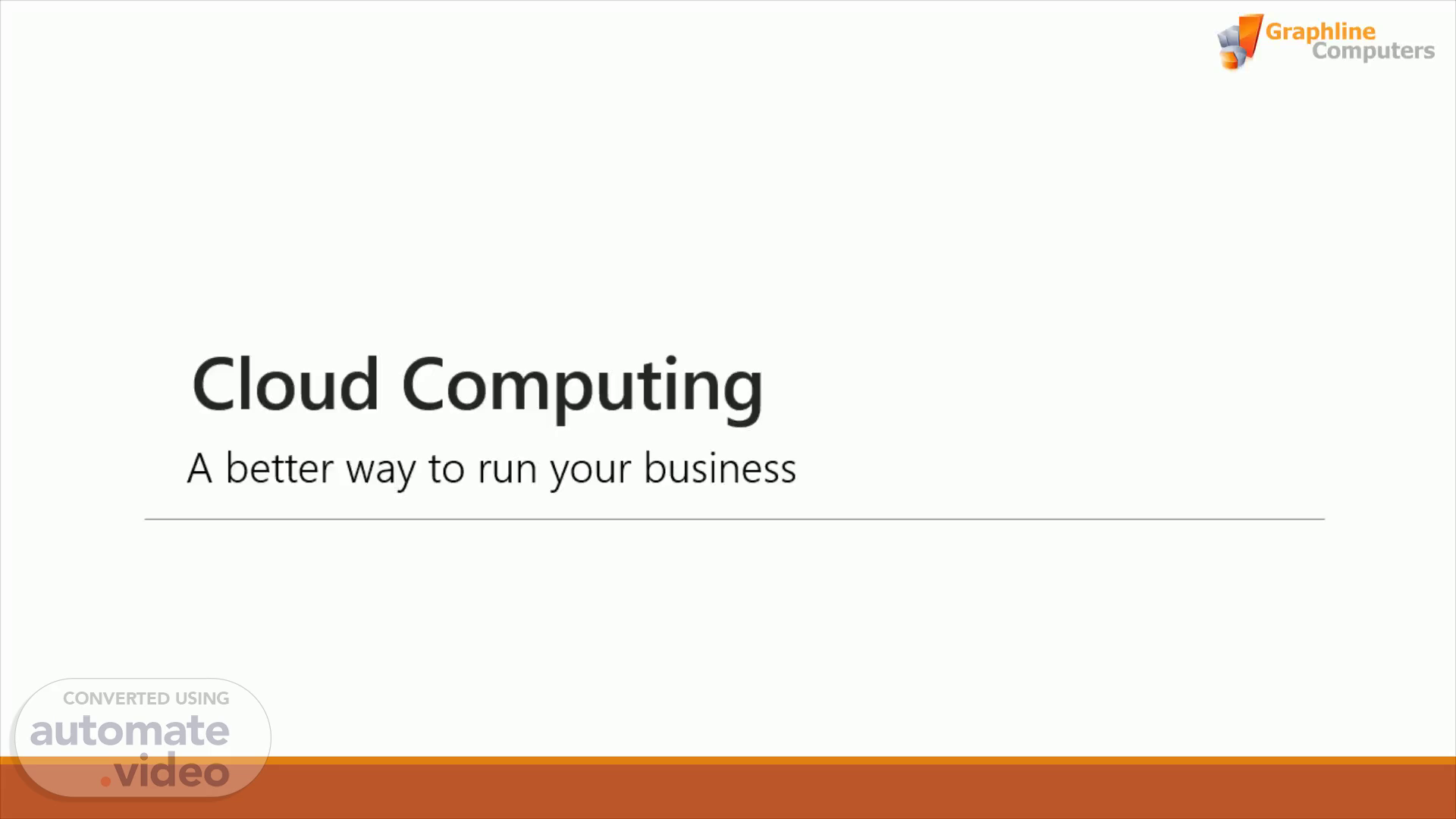Page 1 (0s)
Cloud Computing. A better way to run your business.
Page 2 (7s)
2. What Is Cloud Computing?. Generally speaking, cloud computing can be thought of as anything that involves delivering hosted services over the Internet. A cloud can be private or public. A public cloud sells services to anyone on the internet. A private cloud is a proprietary network or a data center that supplies hosted services to a limited number of people, with certain access and permissions settings. Private or public, the goal of cloud computing is to provide easy, scalable access to computing resources and IT services..
Page 3 (32s)
/. What It Provides. 3. Cloud computing provides shared services as opposed to local servers or storage resources Enables access to information from most web-enabled hardware Allows for cost savings – reduced facility, hardware/software investments, support.
Page 4 (46s)
4. Essential Characteristics. On-demand self-service A consumer can unilaterally provision computing capabilities, such as server time and network storage, as needed automatically without requiring human interaction with each service provider. Broad network access Capabilities are available over the network and accessed through standard mechanisms that promote use by heterogeneous thin or thick client platforms (e.g., mobile phones, tablets, laptops, and workstations)..
Page 5 (1m 6s)
5. Characteristics. Resource pooling The provider’s computing resources are pooled to serve multiple consumers Resources can be dynamically assigned and reassigned according to customer demand Customer generally may not care where the resources are physically located but should be aware of risks if they are located offshore..
Page 6 (1m 22s)
6. Characteristics. Rapid elasticity Capabilities can be expanded or released automatically (i.e., more cpu power, or ability to handle additional users) To the customer this appears seamless, limitless, and responsive to their changing requirements Measured service Customers are charged for the services they use and the amounts There is a metering concept where customer resource usage can be monitored, controlled, and reported, providing transparency for both the provider and consumer of the utilized service.
Page 7 (1m 44s)
7. Service Models. Picture1.
Page 8 (1m 51s)
Service Models. Custom« provided : Software Platform Infrastructure Vendor provided : Internet.
Page 9 (2m 14s)
Service Models. Diagram Description automatically generated.
Page 10 (2m 32s)
Service Models. Software Platform Infrastructure Vendor provi&d : Internet.
Page 11 (2m 52s)
Where Is My Data?. data_recovery_image. Data resides on servers that the customer cannot physically access Vendors may store data anywhere at lowest cost if not restrained by agreement.
Page 12 (3m 4s)
Cloud Computing. 12. Cloud computing is where the organization outsources data processing to computers owned by the vendor. Primarily the vendor hosts the equipment while the audited entities still has control over the application and the data. Outsourcing may also include utilizing the vendor’s computers to store, backup, and provide online access to the organization data. The organization will need to have a robust access to the internet if they want their staff or users to have ready access to the data or even the application that process the data. In the current environment, the data or applications are also available from mobile platforms (laptops with Wi-Fi or cell/mobile cards, smart phones, and tablets)..
Page 13 (3m 35s)
Audit Concerns. When an organization chooses to utilize cloud computing, they need to be aware of risks that they may face with the service provider, the risk they face if they are unable to effectively oversee the service provider, and other risks related to management and security weaknesses in the service provider’s approach. As an auditor you will need to understand what the agency has done to mitigate the risks with cloud computing. When we as auditors are asked to appraise whether an entity or organization getting the benefits of cloud computing are managing the vendor to ensure that they get the required services we need to be aware of the risks that they may face..
Page 14 (4m 6s)
Risk Areas. Colourful pins connected with a thread.
Page 15 (4m 21s)
Updating Cloud Support ' Increase computing power Payper . use model Improve accessib- ility Advantages of Cloud Computing Storage capacity Low cost Reduce Software Cost Streamline processes.
Page 16 (4m 29s)
Disadvantages of Cloud Computing.
Page 17 (4m 36s)
Top Service Providers. 'amazon web servicesTM Google Cloud Platform Microsoft Azure DigitalOcean Pivotal Cloud Foundry openstack IBM Cloud ORACLE CLOUD Alibaba Cloud.
Page 18 (4m 44s)
. OIL-2.
